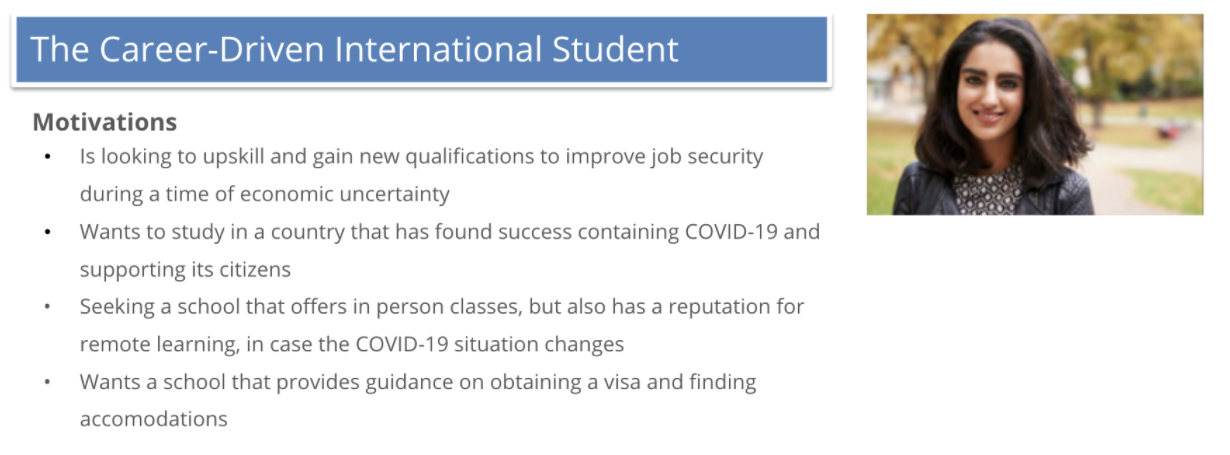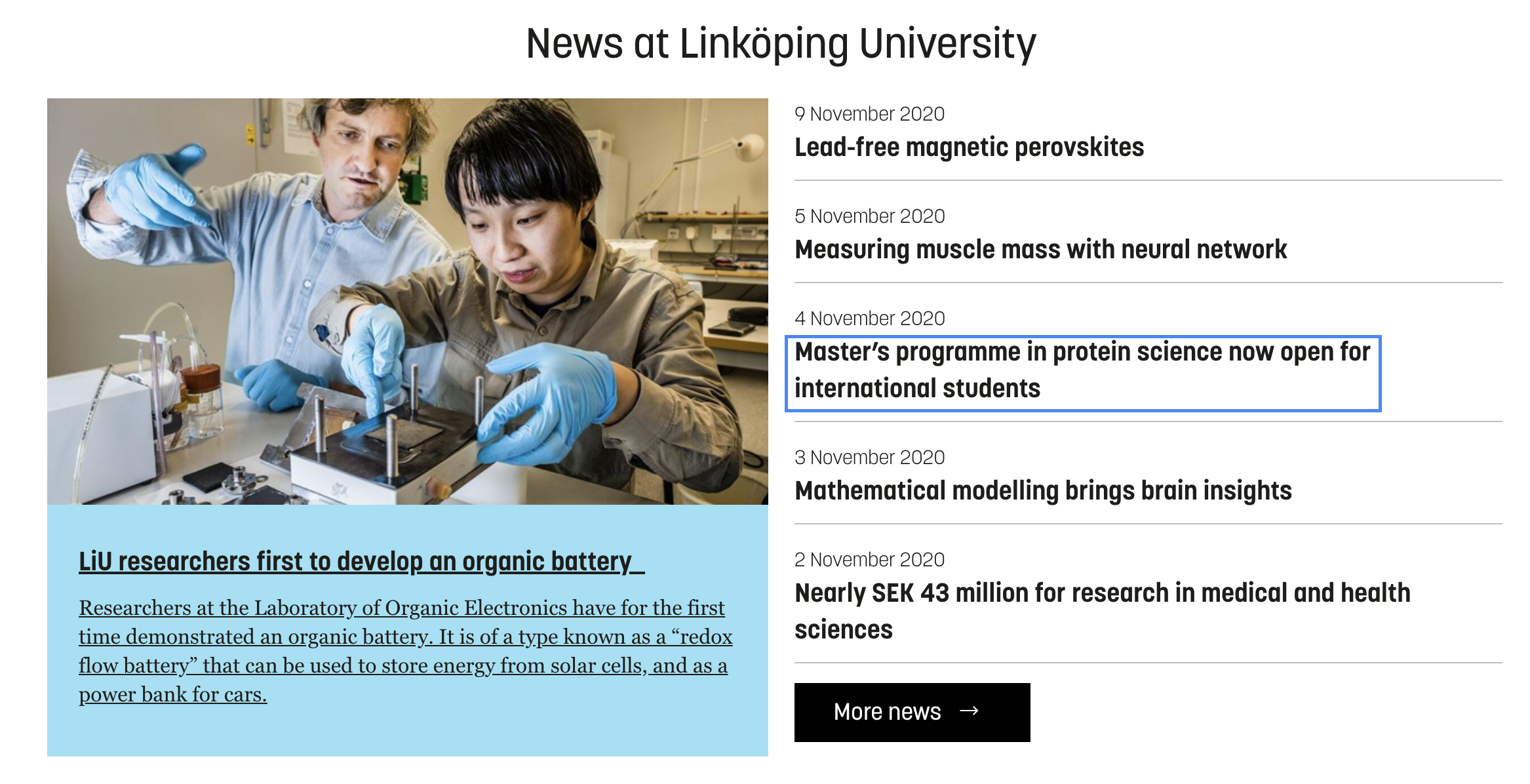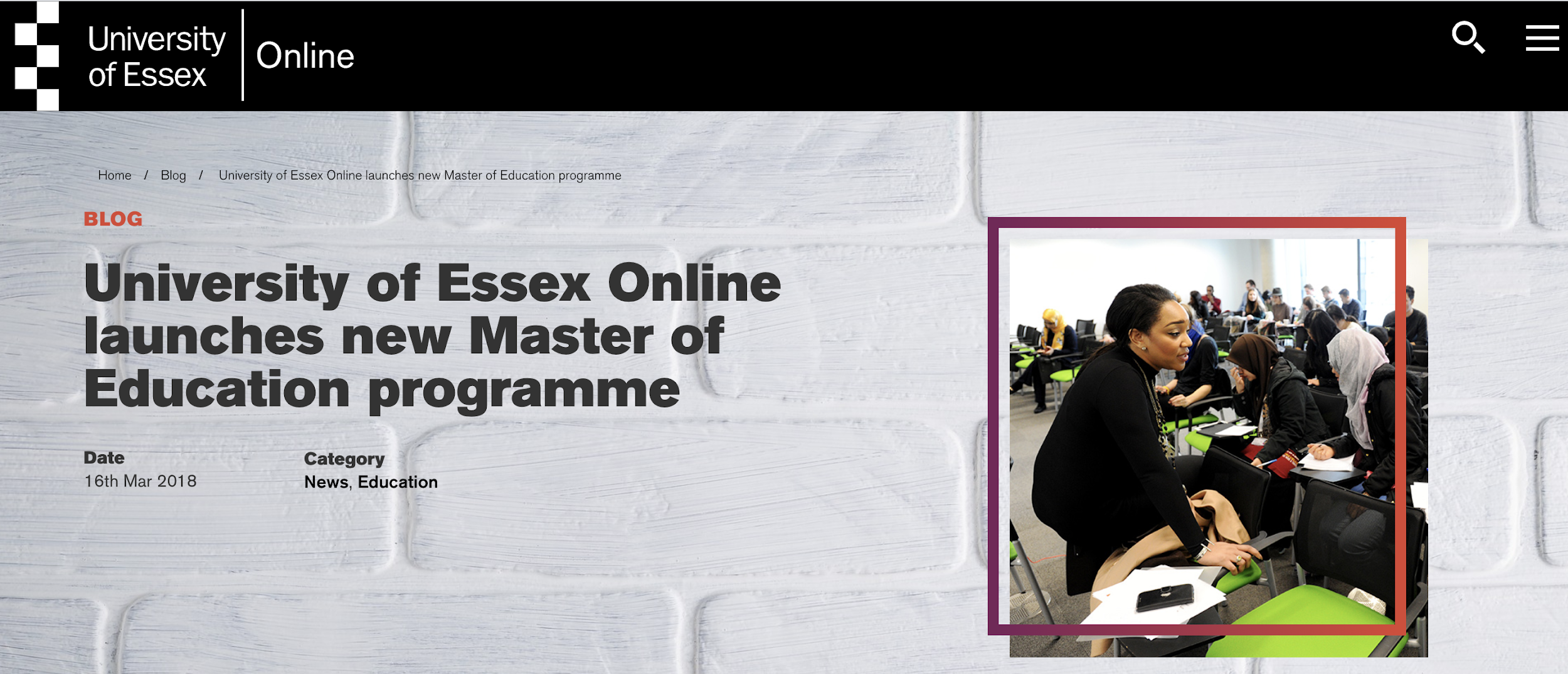
At a time when people are spending considerably more time at home, many individuals are looking to upskill or pursue degree programs to gain a competitive edge in an increasingly competitive employment market. As a result, launching a new academic program is at record rates as schools scramble to launch courses that today’s prospective students want.
So, with the overworked and often under-recognized marketing manager in mind, whose responsibility is to put “bums in seats” for these new programs, here’s a digital marketing checklist to help make your new program launch successful.
1. Make Student Personas Part of Your Education Marketing Strategy
Most people take personas for granted and say, “Of course, we know who our target students are.”
You may say this, but you may not have broken it down to a level of detail that allows you to develop your messaging and refine your digital marketing for colleges effectively.
Creating student personas is a three-step process. The first step is identifying who, exactly, your students are: where they come from, what languages they speak, etc. This will form the background section of your personas:

The next step involves thinking about what your prospects are looking for in a course, school, and community. These are the persona’s “motivations.” In other words, these are the selling points your students are looking for, which means they’re the factors you should emphasize in your marketing efforts:

The last step in persona development is “concerns”—also known as the things that prevent a person from applying, or, in other words, the things they most certainly aren’t looking for in a school:

Even thinking about these different components will help you greatly in your marketing efforts as you will be putting yourself in their shoes, so to speak, which will help you run more relevant, targeted, and accurate campaigns.
2. Developing Program Pages is a Key Component When Launching A New Academic Program
Depending on the nature of your program, your strategies for developing new academic programs, and your resources, you may deal with anywhere from a couple of pages to a microsite or a new subdomain.
Regardless of the number of pages you build, the essential principles of good program page design are the same. They include:
- use straightforward, informative content, telling your story
- plan for the user experience on your page
- professional images
- videos describing your program (if possible)
- testimonials
- clear calls to action (get info, download pdf, speak to an advisor)
- lead generation forms to collect contact info of prospects
Example: The Business section of Dorset College Dublin’s website and an individual course page. As you can see, the design is modern and attractive; the layout is easy to navigate, and there are multiple calls to action (including “APPLY NOW” and “Leave a Message”) that follow as you scroll down the page.


business section

Individual course page
Remember that the above best practices apply not only to the desktop version of your site but also to the mobile one. Even if your site has a responsive design structure, it does not automatically mean everything will be perfectly laid out for your mobile users.
Here are a few best practices to keep in mind for your mobile course page:
- Reduce loading speed
- Ensure text is clear and easy to read
- Optimize menus for easy navigation
- Keep CTAs front-and-centre
- Ensure all buttons are clickable
- Disable popups
Although it will undoubtedly take time and effort to create a winning course page on desktop and mobile, it’s worth investing in, considering that most of your prospects will rely on these pages to learn more about your new course.
3. Incorporate On-page and Off-page SEO Best Practices
Build your pages to be found. You must apply SEO best practices to your pages to ensure they will be seen, ranked, and displayed in search engines, notably Google.
On-page SEO refers to optimizing an individual web page to rank higher in search and generate more traffic. There are several different on-page optimization techniques, all of which revolve around keywords.
Suppose you want to maximize the visibility of your new course. In that case, it’s important to include relevant keywords (i.e. those relating to the course, program, or degree) in strategic places on the course page, including:
- Page title
- URL
- H1 tag
- Meta Description
- Image file names
- Image alt tags
Your school may also want to integrate some keywords throughout the page copy, whether in the body text or header tags, but just make sure not to overdo it. If search engines suspect you of “keyword stuffing”—i.e. trying to arbitrarily add as many keywords into your content as possible—your rankings will take a hit.
Example: Medix College’s Dental Assisting program page. We’ve identified a few areas where the school has integrated dental-related keywords.

Off-page SEO, in contrast, is a bit more complicated. This practice refers to the actions taken outside of your website to impact your search rankings. Simply put, every time another website links to yours, it improves your search rankings.
Although generating backlinks is not as easy as plugging in keywords, you can focus on getting your program’s business partners, like advisory committee members, key suppliers, and coop placement companies, to put a link from their sites to yours.
4. Leverage your Institution’s Website in your Education Marketing Strategy
It is important you take FULL advantage of your institution’s online website when promoting a new course, including the online full-time calendar, part-time, and continuing ed calendars—whichever your new course will fit into. Make sure you are cross-referenced everywhere possible in terms of program listings.
Next, take advantage of every possible “news” channel, including news pages, press releases, international department news, etc. Request, beg, or extort a link to your program page on your school’s home page, even if only a limited-time announcement about your launch, to build presence and traffic to your program pages.
Example: Linkoping University’s homepage, with its new program highlighted.

One tactic education professionals sometimes use to identify these options is to search the site for the last important new program launch to determine what options were made available to them.
5. Get Your School’s Content Marketing in Place
In today’s competitive search environment, your school must have a content marketing component for your program launch and ongoing education marketing efforts. The best case is to publish content related to your program once a week on your program-specific blog or web pages.
Example: A blog from the University of Essex launching their online Master of Education program.

Contributing to other blogs, whether internal to your institution or external, with a link back to your pages is also effective. Get into the practice of making announcements or promoting events, always on your pages or externally, with a link back to your pages for the best results.
If you have the time and resources, engage with local media and publish PowerPoint presentations and videos on your program-specific YouTube channel. We understand that not every school will have the resources to do all of this for each new program, but the more channels you can promote your new course, the more positive the enrollment results will be.
6. Social Media is an Integral Part of Digital Marketing for Colleges
To realize its enrollment goals, your school needs social media to complement its content marketing efforts. Not only does social media help spread the word about your new course, but it’s also an excellent channel for communicating with your audience.
Social media offers a vast landscape of possibilities, so pick one or two channels to start—likely Twitter, Facebook, or LinkedIn—and start building a presence. This doesn’t mean you can’t promote your course on other channels. This provides you with a starting block to build your social strategy.
The most important thing to remember in your posts is to link to your produced content. This simultaneously gets your message out and builds inbound links to your pages, enhancing your SEO.
Example: The Northern Alberta Institute of Technology tweet announcing its new winter city design course. As NAIT did, featuring your students is a great way to entice new prospects.

For your information, if you have a plan for SEO, content marketing, and social media, congratulations. You can now tell your boss you have “Inbound Marketing” covered.
7. Consider Adding Paid Ads to Your Digital Marketing Strategy for Colleges
If you have the budget, paid advertising is an excellent tool to help drive traffic to your pages when you launch your new course. You can take a branding approach on the display network, driving traffic to your home page, or you can dive right into lead generation ads on the search network with recruitment landing pages to drive registrations. The options are endless,
Example: In this particular search, four ads appear for the query “online marketing course,” thereby taking up a significant portion of the first Google search results page. Since it will no doubt take time to build authority and generate traffic for your new course page, search ads are a great way to ensure that interested prospects see your course when researching schools.

Social media ads are also a great option for spreading the word about your school’s new course. Regarding digital marketing for colleges, social advertising is an excellent way to reach prospective students on the channels they frequent most.
Example: A Facebook ad for Cumberland College’s digital marketing program. Social ads tend to generate much more traffic than organic posts, so with the right design and targeting, you can gain a significant number of leads for relatively little ad spend.

If the student personas for your new course differ in any degree from your typical target market, advertising could prove highly effective for reaching this new audience.
8. Monitor, Test, and Improve your Education Marketing Efforts
This may be more of a post-launch activity, but it is essential to consider these things during the planning and launch stages. Google Analytics needs to be set up properly on your pages or microsite to allow you to see the impact of your launch activities.
Goals in Google Analytics are a great way to monitor the success of your launch. Once your school begins to get feedback, you can test ways to improve and optimize your content, calls to action, landing pages, etc, to drive better results.
Launching a new program comes with lots of excitement and high expectations of success. By putting a launch plan in place and using these digital marketing tactics, you can significantly improve your chances of success.
In this post, we’ve provided several high-priority launch tactics, but many other creative approaches and tactics can also be used. From your experience, what other tactics have worked best for you at your institution? Leave your answer in the comments section!
**This blog was originally published in September 2015 but has been updated and expanded to reflect the latest trends and developments in the industry.
FAQ To Consider
What marketing strategies do colleges use?
If you have the budget, paid advertising is an excellent tool to help drive traffic to your pages when you launch your new course. You can take a branding approach on the display network, driving traffic to your home page, or you can dive right into lead generation ads on the search network with recruitment landing pages to drive registrations. The options are endless






